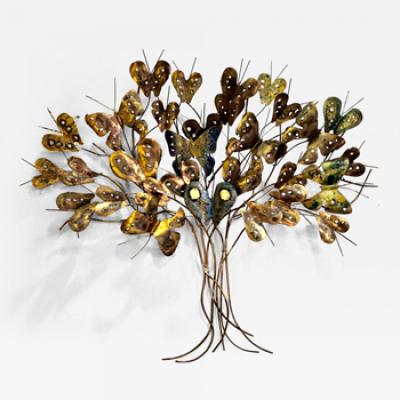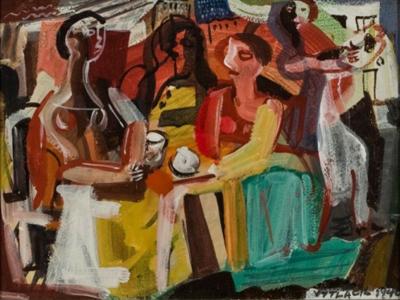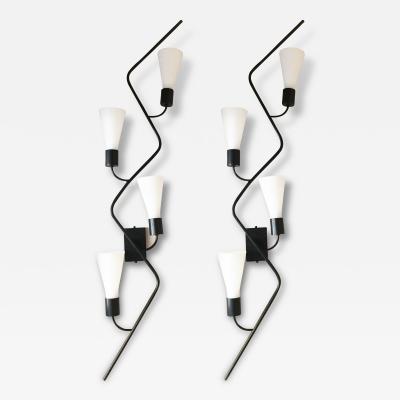News of the Week: High Point Fall Market, Sotheby's Hikes Buyer's Premium, NADA's New York Fair Moves to March & More
October 15 - October 21, 2016
Sotheby’s Hikes Buyer’s Premium, Following Christie’s Lead
One month after rival auction house Christie’s announced a change to its buyer’s premium, Sotheby’s has also decided to adjust its pricing structure, just in time for its major holiday sales season in New York in November. Sotheby’s estimates that only about five to ten percent of lots sold will be affected by this change. This is the first change of its kind since February 2015.
Click here to continue reading via artnet.
Galleries Adapt to Changing Times in the Art Market
All galleries have had to adjust to the rapidly changing global art market by reinventing themselves. According to the TEFAF Art Market Report, 72% of private collectors are now acquiring work from dealers, over any other market professional. The majority of these buyers are working with dealers selling at the mid-market level (from $500K - $10M in sales). Galleries are participating in more art fairs and marketing their available works online to make themselves more accessible to potential collectors of a new generation.
Click here to continue reading via Huffington Post.
High Point Fall Market Returns This Weekend
The semiannual High Point Market is the largest furnishings industry trade show in the world, bringing more than 75,000 people to High Point, North Carolina every six months. The Fall Market kicks off this Saturday and runs through Wednesday. Featuring over 2,000 exhibitors from all around the world, it’s the ultimate hub for one-stop shopping, spotting trends, and building trade relationships. There is 11.5 million square feet of showspace across 180 buildings in the area, drawing over 75,000 attendees. The breadth of showrooms and the number of manufacturers make this a can’t-miss event this season.
Click here to continue reading via High Point Market.
NADA’s New York Fair Moves to March at a New Location
The New Art Dealers Alliance (NADA), a non-profit organization founded in 2002 to promote contemporary and emerging art, is moving its springtime New York fair from the first week of May (when it coincided with Frieze New York) to March of next year. Its new schedule will be from March 2-5, 2017, to run with the Armory Show. The date change was a response to the needs and requests of their membership base and exhibitors. NADA New York will also move locations from Basketball City in the Lower East Side to a more centrally located space – the Skylight Clarkson North on Washington Street in West SoHo.
Click here to continue reading on theartnewspaper.com.
Wall Street Dealmaker Says Former Professor Sold Him Fake Leon Golub Paintings
Andrew J. Hall, a Wall Street trader with a reputation of having nerves of steel, is famous for spotting opportunities in high-stakes oil markets. In a lawsuit he filed last month, he states he recently learned that more than a third of his Leon Golub paintings were forgeries. He claims that an art history professor at a small college and her son hoodwinked him into spending $676,250 on 24 fake paintings.
Click here to continue reading via The New York Times.
Andy Warhol’s “Rain Machine” is Revived in LA
Out of the four original versions Andy Warhol created of “Rain Machine,” only one version remains intact today. Maurice Tuchman, 79, founding curator of modern art at the Los Angeles County Museum of Art, is the owner of the surviving “Rain Machine.” He was a pioneer of experimentation in art and technology, and collaborated with Warhol in the 1960s. He and his wife, Adlin De Domingo, decided to it was time to exhibit the piece once more, for the first time in LA in 45 years. LA-based Turkish artist Refik Anadol collaborated with the couple and re-imagined the piece with digital rain. The piece has been reinstalled almost to a T, complete with a front-facing trough to catch falling “water.” The immersive installation fills the entire 3,000 square-foot exhibition space. To Tuchman, there is no doubt in his mind that Andy Warhol would have been blown away by this new installation at Young Projects Gallery in West Hollywood.
Click here to continue reading via LA Times.
Hans-Ulrich Obrist Tops List of Most Powerful Figures in the Art World
Hans-Ulrich Obrist, artistic director of Serpentine Galleries in London has topped this year’s ArtReview Power 100 of the most influential people in the art world. This is the second time the “curator who never sleeps” has been named the most powerful figure in the global art world for his work with Serpentine, as an art critic, curator, author and sought-after panellist.
Click here to continue reading via The Guardian.
Hugh Kaptur is Palm Springs’ Last Living Mid-Century Architect
Hugh Kaptur, 85, is the last living architect from Palm Springs’ mid-century modern period – and he’s still working. He was most recently commissioned to advise the restoration of the now-protected Tahquitz Plaza office complex, which he designed. Kaptur’s most recognizable buildings include the Musicland Hotel, the Tahquitz Creek Golf Resort clubhouse, and the Steve McQueen house.
Click here to continue reading via Desert Sun.
Wildenstein Fraud Trial Comes to a Close
The defendants argued that the art-dealing family and their associates should be acquitted. The Wildensteins are accused of using a web of offshore trusts and shell corporations to illegally reduce the tax bill for the estate of the late Daniel Wildenstein by as much as 500 million euro. Prosecutors are urging the court to punish Guy Wildenstein, patriarch of the the art-dealing clan and president of Wildenstein & Co in New York, with a four-year prison sentence with two years of hard time and a fine of 250 million euro. The defense portrayed Wildenstein as an eternal child of innocent spirit, who shouldn’t be held accountable for failing to question the legality of the system of trusts that had been put in place by his father and grandfather.
Click here to continue reading via artnet.
A Look at the CIA’s “Secret” Abstract Art Collection
The CIA’s abstract art collection may not be much of a “secret’ but what these paintings represent about the CIA’s relationship with the art world is more complicated. Photographs of the collection have recently been made accessible to the public for the first time. The collection began as a series of abstract paintings loaned to the CIA by notorious art collector Vincent Melzac in 1968. All of these works were by artists affiliated with the Washington Color School, a post-war movement based in DC, known for their stripes, polka dots, and color fields. 20 years later, the agency bought these paintings from Melzac, and expanded the collection to include an “Intelligence Art Collection,” which celebrates historical accomplishments in intelligence, and other artworks that are in some way related to the CIA.































